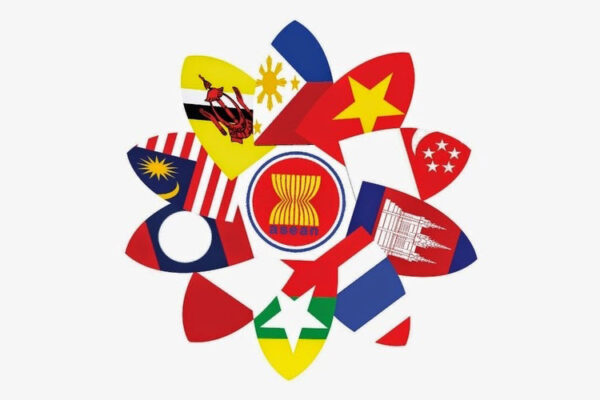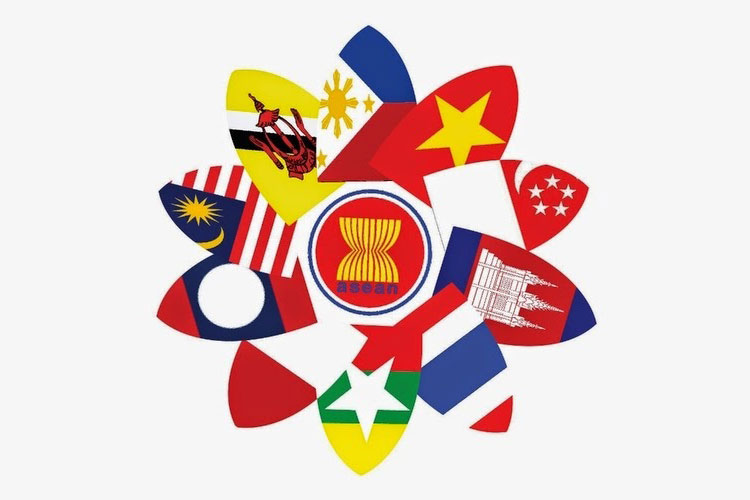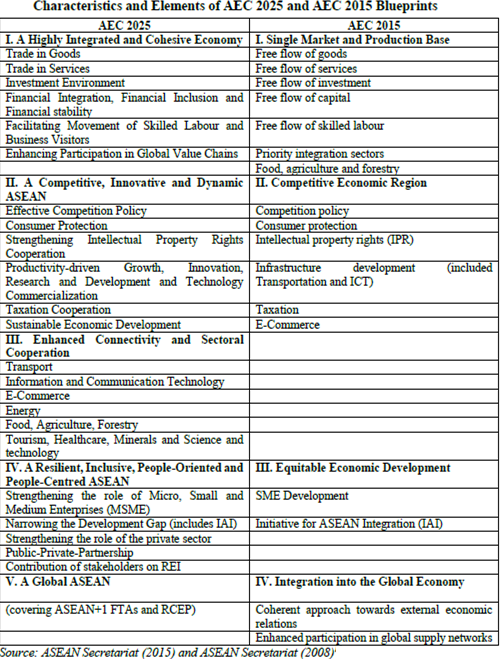Association of Southeast Asian Nations (ASEAN) – A Look Back and Ahead


by Pidchapon (Fai) Niruthisard, MBA ’17
ASEAN – A Look Back and Ahead
Emerging markets have been gaining more and morerecognition over the past few years. Companies are looking for newopportunities to grow beyond their existing markets. Emerging markets in LatinAmerica, e.g. Chile, Brazil, Colombia, Peru, Mexico, attract attention fromNorth America, Europe and even China. However, there is another market thatmight be out of sight but also worth exploring. Under the shadow of China,Southeast Asia is starting to flex its wings and silently becoming morerecognizable in the global economy.
What is ASEAN?
The Association of Southeast Asian Nations (ASEAN) wasestablished in 1967 with the signing of the ASEAN Declaration or more commonlyknown as the Bangkok Declaration, by 5 countries. It was motivated by a fear ofexternal power from exploiting the power vacuum of decolonization at the time,an opportunity to foster corporation with common interest and a believe thatintegration serves interests of all and renders a stronger voice to addressmajor global powers.[1]The organization’s membership has later expanded to ten Southeast Asiancountries: Indonesia, Malaysia, the Philippines, Singapore, Thailand, Brunei,Cambodia, Laos, Myanmar, and Vietnam.
As set out in the ASEAN Declaration, the aims andpurposes of ASEAN are:[2]
1.To accelerate economicgrowth, social progress, and cultural development in the region.
2.To promote regional peaceand stability.
3.To promote collaborationand mutual assistance on matters of common interest.
4.To provide assistance toeach other in the form of training and research facilities.
5.To collaborate moreeffectively for the greater utilization of their agriculture and industries,the expansion of their trade, the improvement of their transportation andcommunications facilities and the raising of the living standards of theirpeoples;
6.To promote Southeast Asianstudies.
7.To maintain close,beneficial co-operation with existing international organizations with similaraims and purposes

ASEAN’s average annual growth rate was 5.2% between 2007-2016. It has consistently outperformed global growth and the averagegrowth of the Asia-Pacific Economic Cooperation (APEC), which was 2.8%.[3]ASEAN economy is one of the largest economic zone in the world and is projectedto rank as the fourth-largest economy by 2050.[4] At US$ 2.4 trillion[5] in2015, it was the sixth largest in the world and the third largest in Asia,following China and Japan.
Total ASEAN trade is approximately US$2.3 trillion.Intra-ASEAN comprised the largest share at 24%, followed by China (15%), Japan(11%), European Union (10%) and USA (9%). Foreign direct investment reachedUS$121 billion with the majority focuses on services sector. Similarly, intra-ASEANwas the highest source of investment at 18%. The ASEAN members arestrategically located, particularly as a shipping and freight hub
A combinedpopulation of all members is approximately 625 million,[6]larger than the European Union or North America. Economies in the region is andwill be driven by ASEAN’s unique demographic together with productivityimprovements, contributing to growing consumer demand. As more than half of thepopulation are under 30, youthful population will be the power house of ASEANin the near future. Consuming class households could double the size to 163million by 2030.[7]
What is AEC?
Initiatives towards the economic integration startedas early as late 1980s as geopolitical factors pushed for regional corporation.Production networks have been fragmented to make use of each location’sadvantage and reduce costs. In 1992, free trade agreements were mandated tofacilitate the flow. ASEAN Free Trade Area (AFTA) entails bringing down tariffsamong ASEAN economies. Subsequently, ASEAN Industrial Corporation (AICO) schemepromotes further joint-manufacturing between ASEAN-based companies where productsare subjected to end-tariff rate and other investment incentives offered byASEAN authorities.
In 2003, ASEAN outlined its three “pillars”: the ASEANPolitical-Security Community, the ASEAN Economic Community, and the ASEANSocio-Cultural Community. It decided to establish ASEAN Economic Community(AEC) in 2020, but, later in 2007, agreed to accelerate the process to 2015.The goal is to deepen its integration by capturing the region’s potential to beable to compete with Asia’s larger economy.
The firstAEC Blueprint (2007-2015) consists of 4 key elements. First, the single marketwill ensure the free flow of goods, services, investment, capital and skilledlabor. Second, policies improvement and infrastructure development will createa competitive region. Third, narrowing development gap and strengthen SMEcompetitiveness will lead to equitable economic development regions. Forth,integration into global economy will be enhanced through external economicrelations and global supply networks. At this moment, AEC Blueprint 2025 (2015-2025)is implemented. The new plan encourages ASEAN to be more proactive andenunciates the vision of leading ASEAN to be highly integrated and cohesive;competitive, innovative and dynamic; with enhanced connectivity and sectoralcooperation; and a more resilient, inclusive, and people-oriented,people-centered community, integrated with the global economy.[8]There are other 4 major agreements in relation to the AEC: ASEAN Trade in GoodsAgreement (ATIGA), ASEAN Framework Agreement on Services (AFAS), ASEANComprehensive Investment Agreement (ACIA), ASEAN Agreement on the Movement ofNatural Persons (AAMNP). [See Expected Outcomes and Benefits of Select AEC agreements as by ASEAN.org [9]]
ASEAN learns from EU’s integration and its setbacksand tries to implement what suits the member countries. AEC’s economicintegration is unlike that of the European Union (EU) in that it is lessbureaucratic. European Union operates through independent institution acceptedby all members. ASEAN does not have similar bodies. The consensus is reached bypolitical leaders from all countries with ASEAN Secretariat as a monitoring andcoordinating body. It has not aimed to integrate monetary term or singlecurrency, rather it focuses on integrative trade. In regards to tariff, commonrate applies across ASEAN but imports from other countries are subjected toeach economy’s rate. EU’s tariff rates, on the other hands, are commonly appliedto all imports.

Challenges
Before 2015, many had raised questions if thisintegration would be materialized. In 2015, the AEC reached its milestone butthe path forward requires dealing with its complexities and contradictions. Economicintegration could expand opportunities to ASEAN countries but it also poseschallenges.
1. Diversity in the region
ASEAN is characterized by awide diversity of people, political systems, languages, and cultures. Economiesare at different development stages but all share immense growth potential. Themajority of the countries are categorized as lower middle income. The existinggap may widen as the integration progress. Investors cannot rely on a one-size-fits-allstrategy and should be aware of local preferences and cultural sensitivitieseven though it appears to become more integrated. One thing that ASEANconsistently pursue is to consolidate some aspects but not to lose the identityof each country.
2. Subpar Infrastructure
Infrastructure gap ranksamong the investors’ top concerns. Poor infrastructure restrains growth andseveral governments realizes that. “Countries have realized that theavailability of soft and hard infrastructure at the national level is aprerequisite if they are to benefit from regional economic integration,” sharedthe Institute of Southeast Asian Studies senior fellow Sanchita Basu Das.[10]They have started to increase infrastructure spending. The downside is theirfocus will be shifted from implementing AEC to improving its infrastructures. Manycountries and ASEAN itself do not have the financial resources to fulfill theneed. Private investors gradually show interests as regulatory is morefavorable. Regional development institutions and international financialinstitutions such as Asian Infrastructure Investment Bank (AIIB) are other bigforces.
3. Corruption
Corruption is pervasive anddeep-rooted in the majority of the countries. It jeopardizes the country’sability to attract foreign investment. As foreign investors are subjected toanti-corruption legislation, they are at disadvantage when competing withcompanies that don’t hold accountable for such act. Accelerate the integrationmight aggravate the issue. Regional measures need to be effectively implementedto curb corruptions and its adverse effects.
4. Conflict of Interests
Most member countries takeprotectionist stances. Each has different expectations and strategic interestsfrom AEC and they are mindful if other countries benefit at their expenses. Asthe less developed countries normally receive less than the more developed,economic integration takes lower priority to the first. For example, Singaporereceived the highest FDI in 2015 at around 50% of total net inflow whileCambodia, Lao and Myanmar receive around 0.1%-2%.[11] So far, the economic integration hasbeen about bundling package to attract internationals rather than creatingtighter ties among members. If ASEAN can find ways to increasingly pool theirsovereignty, it would help consolidate the integration process in the samedirection to all.
Looking Ahead
2017 marks the fiftieth anniversary of ASEANestablishment. ASEAN has come a long way but the road ahead would truly proveits ability to unleash potentials for ASEAN countries. The immense opportunitylies in Southeast Asia. To transition this Tiger Cub Economy to full-growntiger one requires equally collaborations among all members and commonregulatory frameworks to push the community forward as a bloc and to defiantlytake a stand in a global arena. The key question is how long it will take. Theanswer of which remains to be seen.
[1]http://www.mckinsey.com/industries/public-sector/our-insights/asean-the-way-forward#0
[2]See in ASEAN website: http://asean.org/asean/about-asean/overview/
[3]http://www.mckinsey.com/industries/public-sector/our-insights/understanding-asean-seven-things-you-need-to-know
[4]http://www.mckinsey.com/industries/public-sector/our-insights/understanding-asean-seven-things-you-need-to-know
[5]http://asean.org/storage/2012/05/ASEAN_in_2016.pdf
[6]https://en.wikipedia.org/wiki/Association_of_Southeast_Asian_Nations#Economy
[7]https://www.canback.com/files/2014_MK_MGI%20SE%20Asia_Executive%20summary.pdf
[8]http://asean.org/asean-economic-community/
[9]http://investasean.asean.org/index.php/page/view/asean-economic-community
[10]http://www.afr.com/news/special-reports/asia-business-outlook/business-divided-on-the-state-of-asean-infrastructure-improvements-20161006-grw6l9
[11]http://asean.org/?static_post=foreign-direct-investment-statistics
